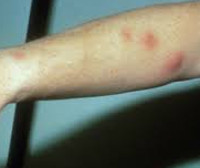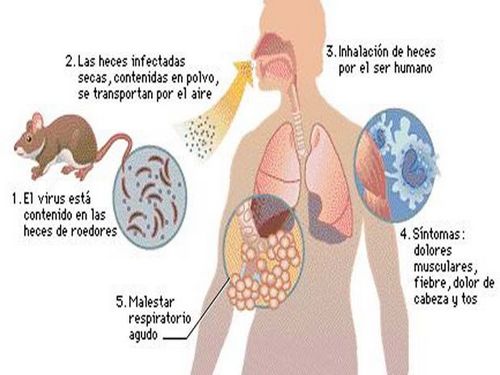Alimentary toxic aleukia – severe food intoxication caused by mycotoxins of Fusarium fungi. The specific action of the toxin is the defeat of lymphoid tissue and bone marrow. The main manifestations of the disease serve and necrotic angina, hemorrhagic syndrome.
Diagnosis is the detection of the pathogen in bacteriological examination of blood and tissue of the patient, not the smaller role of careful history, presence of characteristic changes of the tonsils and leukopenia in clinical analysis of blood.
Treatment consists of detoxification, systemic and local antibiotic therapy, may include transfusion of blood components.
Alimentary toxic aleukia
Alimentary toxic aleukia, also known as septic, alimentary hemorrhagic angina and acute alimentary mycotoxicosis, is a severe poisoning caused by the toxin of the fungus Fusarium. Route of infection – nutritional, most often associated with eating foods from the overwintered grain containing spores of the fungus.
For the first time pathology was described in 1932 during an epidemic in Kazakhstan, found all over the globe. It is established that the most exposed residents of agricultural areas, usually the increase in the number of cases is observed in the period from April to June. The sick person is not contagious to others.

Causes alimentary toxic aleikia
Pathogens – fungi of the genus Fusarium that produce the toxin poin, which causes local manifestations in the form of necrosis and has an affinity for hematopoietic and lymphoid tissues. The source of infection are crops that served as a nutrient medium for reproduction and accumulation pain in the winter. Such agricultural crops are millet, buckwheat, wheat, rye, oats and barley. Favorable growing conditions for the fungus are high humidity, presence of oxygen and heat. In the cold season, the fungi turn into spores and survive the winter, and then spring again begins to produce poin.
Risk factors for outbreaks are considered the warm winter and early spring, as well as high humidity and other violations of rules of storage of cereals. The toxin is not destroyed by heat treatment, fermentation, able to keep their properties up to five years, especially when the storage temperature range from -1°to +5°C. populations at risk for morbidity are patients with immunosuppression (HIV infection, prolonged therapy with corticosteroids, immunosuppressants), those after splenectomy, children, agricultural workers, food industry workers, food industry.
Pathogenesis
After getting pain for skin irritation local reaction associated with necrotic changes in the tissues due to extensive inflammation. Through the wound surface, the toxin is intensively absorbed into the blood, spreads throughout the body, with tropism for myeloid (red bone marrow) and later to the lymphoid tissue. Under the influence of pain there oppression blood, inflammatory changes in the thymus, spleen, lymph nodes, Peyer’s patches and the Appendix.
There is a gradual decrease in the number of erythrocytes, monocytes, granulocytes, platelets, the precursors of T-lymphocytes, b-lymphocytes and NK-cells as well as macrophages, dendritic cells. Occur hemorrhagic changes in the parenchymatous organs, the skin develops a septic condition. Immunity after the disease resistant, but its duration has not been studied.
Classification
In the clinic alimentary mycotoxicosis there are two types of the course, which is in direct proportion to the amount eaten grain product of diphtheritic strain, the concentration of toxin in the food product and the immune competence of the organism of the sick:
- Lightning. Characteristically rapid growth of the clinical manifestations and fatal outcome during the first days of the disease due to the expanded DIC or sepsis.
- Typical. Lasts about 3-4 weeks, characterized by a gradual increase in the severity of the condition, and severe stages. Includes toxic, lakopenicescoe and anginal-hemorrhagic stage.
The symptoms of alimentary toxic aleikia
The incubation period ranges from 2 to 6 weeks, by eating large quantities of food from infected grain (500 g) symptoms appear after a few days. The first signs of poisoning are nausea, vomiting, loose, watery stools, weakness, decreased performance and fatigue. Describes the symptoms last about 3 days, being replaced by a period of leukopenia. Clinically, this condition reveals itself in increasing weakness, malaise, drowsiness (this stage usually lasts 2-3, at least 6-8 weeks).
In the future, by exacerbating the toxic effects of angina occurs hemorrhagic stage. Patients complain of high rises in body temperature (over 39°C), chills awesome, note the appearance of petechial hemorrhages (petechiae) on the body, at least – Akimoto; gingival and nasal bleeding. At the same time having severe pain on swallowing, unpleasant putrid breath, dirty gray deposits on the tonsils, oral cavity, larynx and pharynx. With the progression of the disease are formed of cellulitis and abscesses of the skin, tissue and internal organs.
Complications
Complications usually manifest due to fulminant course of food mycotoxicosis, or anginal-hemorrhagic period typical of the disease. The most common of these are pneumonia, bronchitis, lung abscesses, phlegmon of the soft tissues and osteomyelitis. In terms of increasing immunosuppression data condition can lead to sepsis. In some cases there is the appearance of necrotic changes of the distal extremities. Deficiency of blood coagulation, the defeat parenchymatous organs (kidney, liver, spleen) lead to the deployment of disseminated intravascular coagulation syndrome with a characteristic clinic massive intractable bleeding.
Diagnosis
If you suspect alakia alimentary toxic origin mandatory consultation of infectious disease specialists, ENT, pulmonologist; after the appearance of skin ulcers and internal organs of the surgeon.
To identify the pathogen, assess the nature and severity of the changes performed laboratory and instrumental examinations:
- Clinical and biochemical blood tests. In the General analysis of blood, there is a pronounced leukopenia, thrombocytopenia, anemia, accelerated erythrocyte sedimentation rate. Biochemical parameters reflect the increased activity of AST, ALT, creatinine, urea.
- Identification of infectious agents. To distinguish the fungus from the tissues and blood is a laborious and expensive process. Bacanales produced by planting material on a nutrient medium. Detection of the toxin in the grain is carried out using a biological sample (laboratory feeding pigeons suspicious of grain, a skin test on rabbits), chromatography of the beans.
- Endoscopy of ENT organs. On examination of the pharynx ‒ pharyngoscope ‒ show signs of catarrhal, necrotic or gangrenous angina. Typical raids dirty-gray or brown color, passing the tonsils on the mucosa of the larynx, pharynx, oral cavity; bleeding of the mucosa of the nose and throat, the formation of necrosis.
If signs of pneumonia is chest x-ray; the purpose of differential diagnosis used ultrasound examination of abdominal cavity, small pelvis, retroperitoneal space, lymph nodes. Differential diagnosis is carried out with diphtheria, sepsis, systemic mycosis, agranulocytosis, angina Simanovsky-Plaut-Vincent, poisoning by heavy metals, radioactive substances.
Treatment of alimentary-toxic aleikia
Therapeutic activities begin with the withdrawal from food poisoned food, lavage of the stomach and siphon enema (or taking laxatives). It is recommended to eliminate from the diet alcohol, spices, fatty, fried foods, cereal foods, stick to frequent smaller food to serve foods at room temperature (in order to avoid additional trauma to mucous membranes). You must monitor the drinking regime, while it is preferable to use water or non-acidic juices. After each meal is recommended to rinse oral cavity with antiseptic solutions (chlorhexidine, furacilin, calendula, sage, chamomile).
Treatment of alimentary-toxic aleikia usually stationary, includes detoxification therapy (glucose-saline solutions) and receiving broad-spectrum antibiotics (penicillins, cephalosporins). During the long-term pathology may need to substitute for loss of blood components: the transfusion of Packed red blood cells, platelet concentrate, leukocyte concentrate. There is evidence of the positive impact of colony-stimulating factor on the course, severity and outcome of the disease. At the time of treatment is recommended to reduce the dose of immunosuppressive drugs or to cancel them when possible. The appearance of localized or spilled purulent processes is their opening and drainage, local application of antibacterial agents (ointments, suspensions).
Prognosis and prevention
In uncomplicated disease lasts about 3-4 weeks. With timely treatment for medical assistance, withdrawal from eating contaminated food symptoms of mycotoxicosis are prone to self-extinction. With the appearance of hemorrhagic syndrome and necrotic changes in the tonsils percentage of mortality is 50-80%. However, for the occurrence of life-threatening disease should be about two to three months of continuous ingestion of contaminated cereal product, even on the background of obvious discomfort. Timely hospitalization and a thorough epidemiological investigation reduces the risk of death and complications.
Specific prophylaxis (vaccines) at this stage of development of medicine has not been developed. To prevent infection by bodies of sanitary supervision will be carried out periodic inspections of grain, explanatory work with the population. Prohibited the sale and purchase of overwintered grain for food needs of people and animals (permitted passing on the distilleries). In areas where there were sporadic cases of toxic aleikia, cereals, raw materials of them must be disposed of; the population must be examined for radiation.




Your methods confuses me …
Quite well written, if a bit right-on. You ok?
I appreciate you sharing this blog article. Much obliged.
I do believe all the concepts you’ve presented for your post. They’re really convincing and will certainly work. Still, the posts are very short for novices. May you please lengthen them a little from next time? Thank you for the post.
My clique on Facebook would love this entry. Is it okay if I link it to them?
Hello. I have checked your osvilt.com and i see you’ve got some duplicate content so probably it is the reason that you don’t rank high in google.
But you can fix this issue fast. There is a tool that rewrites content like human, just search in google: miftolo’s tools
Sounds actually compelling. Would it be ok to volunteer one or two questions?
One thing is the fact that one of the most typical incentives for making use of your credit cards is a cash-back or rebate offer. Generally, you’ll get 1-5 back upon various purchases. Depending on the card, you may get 1 in return on most acquisitions, and 5 in return on expenditures made from convenience stores, gasoline stations, grocery stores and also ‘member merchants’.